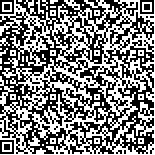下载中心
优秀审稿专家
优秀论文
相关链接
摘要

对多源遥感数据协同生产的2010年—2015年中国区域1 km空间分辨率5天合成的MuSyQ(Multi-source data Synergized Quantitative remote sensing production system)叶面积指数LAI产品进行验证。参考现有的LAI产品(MODIS c5,GLASS LAI)和中国生态系统研究网络部分农田和森林站点可用的LAI地面测量数据,从时空连续性、时空一致性、精度和准确性等方面对中国区域的MuSyQ LAI产品进行定性和定量分析与评价。结果表明:(1) MuSyQ LAI产品在保证精度优于MODIS产品的情况下,时间分辨率和时空连续性均有提高。MuSyQ LAI与其他LAI产品(MODIS c5,GLASS LAI)在整体上有很好的一致性(RMSE=1.0,RMSE=0.81),但对常绿阔叶林高值处的描述不稳定;(2) 与LAI地面测量数据相比,MuSyQ LAI产品与地面参考图对比结果较好(最高相关性(R2=0.54)和较低总体误差(RMSE=0.96)),其在阔叶作物生长季高值处有些许低估且在某些阔叶林站点有些高估。整体上,MuSyQ LAI产品呈现出较高的精度,可靠的空间分布和连续稳定的时间分布,且对森林LAI的描述具有更可靠的动态范围。
Leaf Area Index (LAI), which is defined as the single-sided leaf area per unit horizontal ground area, is a key biophysical variable in land surface processes related to vegetation dynamics, such as photosynthesis, transpiration, and energy balance. This study aims to validate the Multisource data Synergized Quantitative (MuSyQ) remote sensing production system LAI product, which is produced by multisource remote sensing data of China from 2010 to 2015, with 1 km spatial resolution and 5 day time step. Several performance criteria, such as continuity, spatial and temporal consistency, dynamic range of retrievals, statistical analysis per biome type, precision, and accuracy, were evaluated.
In this study, the performance of the MuSyQ LAI product was assessed in two ways, namely, (1) by comparing the spatial and temporal characteristics of the MuSyQ LAI product with those of other moderate-resolution LAI products and (2) by comparing MuSyQ LAI values with ground measurement data. The spatial and temporal consistencies of the MuSyQ LAI product were evaluated through intercomparison with reference LAI products (MODIS C5, GLASS) over a network of homogeneous study sites (BELMANIP-2.1 and CERN) in China in 2010-2015. The accuracy of the MuSyQ LAI product was evaluated using numerous available ground reference maps.
The MuSyQ LAI product presents a reliable and consistent spatial distribution of dynamic range in spatial distribution, thereby overcoming MODIS' underestimation of the LAI values and the unreasonable spatiotemporal variations in MODIS LAI products. MuSyQ LAI and MODIS and GLASS LAI have the highest differences (systematic and total) and lowest correlations in evergreen broadleaf forest given the decrease in cloud or snow and other factors by comparing their spatial and temporal characteristics with other products. Qualitative analysis of temporal profiles shows that the MuSyQ LAI product exhibits a consistent seasonal variation with two other LAI products. The temporal profiles of MuSyQ LAI have a reasonable dynamic range and are smoother and more stable than MODIS. The main limitation of the MuSyQ LAI product is the existence of some inconsistencies in the time series at the forest site with evident fluctuations near the peak of the temporal profiles in comparison with the GLASS product. The high values of broadleaf crops during their growth season were slightly underestimated. Comparisons with LAI surface measurements show that the MuSyQ product agrees well with the LAI data (highest correlation, lower systematic error, and overall error) and is slightly underestimated at high values in the broadleaf growing season, where several broadleaf forest sites were slightly overestimated.
In summary, the MuSyQ LAI product based on multisource remote sensing data immensely improves the product time resolution to 5 days and the spatiotemporal continuity of LAI products. The MuSyQ LAI product exhibits favorable performance, where the spatial distribution in China is realistic, and the spatial and temporal continuity is greater than other similar products. The temporal profiles reflect the seasonal characteristics of vegetation well, with a slight difference from the ground reference measurement values. The improvement in the spatial and temporal continuity is helpful for applying LAI in dynamic models (such as crop growth and surface process models). However, these validation results are limited by the ground dataset used to quantify the uncertainties attached to the satellite products. Currently, limited data on broadleaf evergreen, deciduous forests, and large regions around the world (e.g., Asia) are available. Their representativeness can be improved by obtaining multitemporal measurements on various sites, thereby sampling the various biome types found around the world. Furthermore, the uncertainties associated with ground reference data must be quantified to provide a reliable analysis of the validation results.

